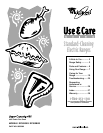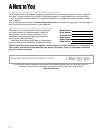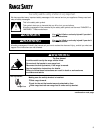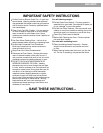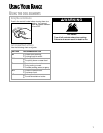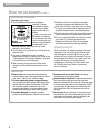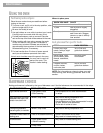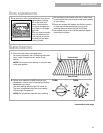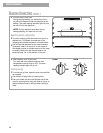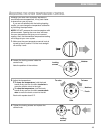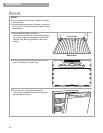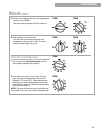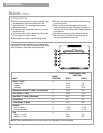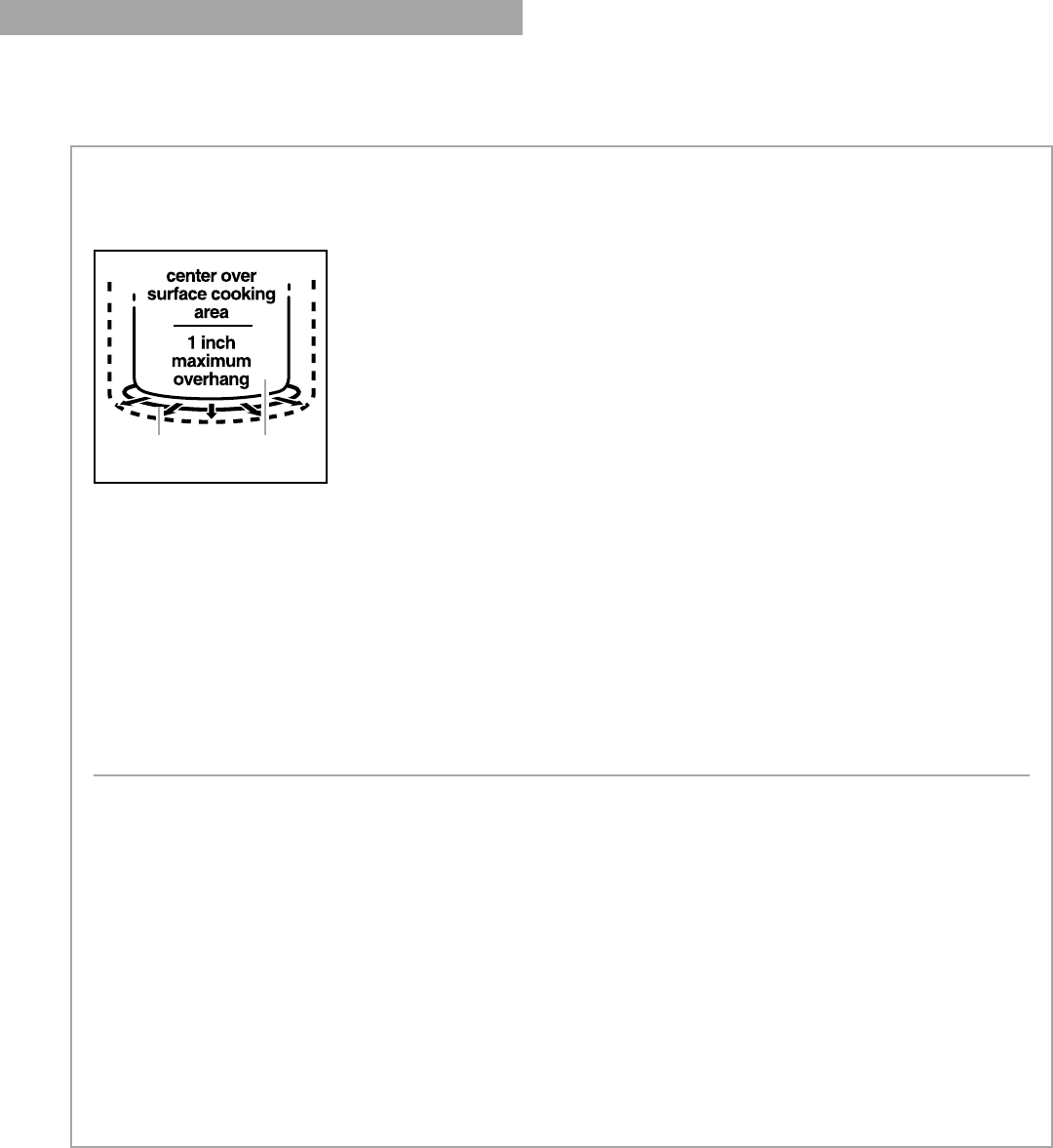
8
USING THE COIL ELEMENTS (CONT.)
USING YOUR RANGE
Cookware tips
Home canning information
To protect your range:
•
Use flat-bottomed canners on all types of
cooktops. Canners
with rippled or ridged
bottoms do not allow
good contact with the
surface.
•
Center the canner over
the largest coil element.
Do not extend more than
one inch outside the coil
element. Large diameter
canners/pans, if not
centered correctly, trap heat and can cause
damage to the cooktop.
•
Do not place your canner on two coil elements at
the same time.
•
The type of material the canner is made of
determines the length of heating time. Refer to the
“Characteristics of cookware materials” chart later
in this section for more information.
•
When canning for long periods of time, allow
elements and the surrounding surfaces to cool
down.
1" 1"
Pan
•
Alternate use of the coil elements between
batches or prepare small batches at a time.
•
Start with hot water, cover with a lid, and bring
to a boil; then reduce heat to maintain a boil or
required pressure levels in a pressure canner.
•
On coil element model, keep your reflector bowls
clean so that they will always reflect heat well.
•
For up-to-date information on canning, contact
your local U.S. Government Agricultural
Department Extension Office or companies
who manufacture home canning products.
Optional canning kit
Most water-bath or pressure canners have large
diameters. If you do canning with them at high
heat settings for long periods of time, you can
shorten the life of regular coil elements. This can
also damage the cooktop. If you plan to use the
cooktop for canning, we recommend the
installation of a Canning Kit. Order the kit (Part
No. 242905) from your dealer or authorized
service company.
Surface
cooking area
•
Select a pan that is about the same size as the
surface cooking area. Cookware should not extend
more than 1 inch (2.5 cm) outside the area.
•
For best results and greater energy efficiency,
use only flat-bottomed cookware that makes good
contact with the surface cooking area. Cookware
with rounded, warped, ribbed (such as some
porcelain enamelware), or dented bottoms could
cause uneven heating and poor cooking results.
•
Cookware designed with slightly indented
bottoms or small expansion channels can be used.
•
Cookware with a non-stick finish has heating
characteristics of the base material.
•
Use flat bottom cookware for best heat conduction
from the surface cooking area to the cookware.
Determine flatness with the ruler test. Place the edge
of a ruler across the bottom of the cookware. Hold it
up to the light. No light should be visible under the
ruler. Rotate the ruler in all directions and look for
any light.
•
Do not leave empty cookware, or cookware which
has boiled dry, on a hot surface cooking area. The
cookware could overheat, causing damage to the
cookware or the surface cooking area.



